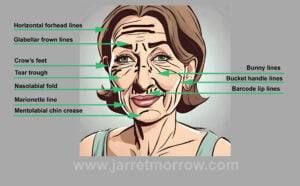The Lees of brown rice are by-products of its fermentation in the process of making rice wine. Brown rice itself is an unrefined whole grain which is a rich source of dietary fiber, vitamins, minerals, and other constituents. Previous research suggests that intake of whole grains is associated with a lower risk of both diabetes and cardiovascular disease. In Asian studies, they’ve also found that substituting brown rice for white rice is also associated with a reduction in the risk of type 2 diabetes.
Researchers from Korea, studied the effects of supplementation with the lees of brown rice in patients with type 2 diabetes [1]. The study itself randomized 30 patients to take either a mixed-grain product or a supplement prepared from the lees of brown rice for 12 weeks. Outcome measures for their study included body weight, waist circumference, body composition as well as lipid profiles and other measures.
How was the lees of brown rice supplement prepared?
An extract of the LB was produced by fermenting liquefied brown rice, followed by lyophilization to remove all water and alcohol…
How did the lees of brown rice supplement compare to the mixed-grain supplement?
Subjects assigned to the intervention group were instructed to ingest 40 g of the extracted LB with milk or water on a daily basis. Forty grams of LB provided 2.9 g/d of
dietary fiber and 670 kJ/d of energy. The subjects assigned to the placebo group ingested 45 g of an MG on a daily basis. The MG product used was composed of ground grains
containing barley (10%), white rice (40%), glutinous millet (30%), brown rice (10%), and black soybean (10%). This product provided 1.8 g/d of dietary fiber and 670 kJ/d of
energy.
Study results:
The researchers found that consumption of the supplement containing lees of brown rice (LB) was associated with a greater increase in waist circumference than those who consumed the mixed-grain (MG)supplement. (LB: 87.9 ± 8.8 to 85.1 ± 9.0 cm; MG: 86.9 ± 8.8 to 86.0 ± 9.3 cm; P = .032)
As well, supplementation with LB also resulted in a greater reduction of aspartate transaminase and alanine transaminase (enzymes measured to determine liver function).
- aspartate transaminase (LB: 25.4 ± 8.5 to 21.0 ± 5.1 IU/mL; MG: 22.5 ± 5.3 to 22.4 ± 5.7 IU/mL; P = .044)
- alanine transaminase (LB: 28.6 ± 11.3 to 21.9 ± 8.2 IU/mL; MG: 24.4 ± 7.5 to 24.5 ± 9.9 IU/mL; P = .038)
No improvement in the cholesterol levels or lipid profile was demonstrated in the diabetes who consumed LB.
As well, LB-supplementation did not result in a reduction in body weight, BMI, or blood pressure.
Study author conclusions:
In conclusion, our results show that an extract of the LB reduces waist and hip circumferences in type 2 diabetic patients. We also observed that ingesting lees extract was associated with reduced secretion of an inflammatory cytokine (IL-6) and decreased ALT and AST levels. These data suggest that the LB may be useful in attenuating CVD risk in type 2 diabetic patients, and this appears to be explained, at least in part, by its favorable association with abdominal obesity, hepatic function, and inflammatory processes. Further study is required to evaluate the metabolic effects of the extract of the LB in type 2 diabetes.
Key points:
- If you haven’t already, consider making the switch from white rice to brown rice.
- Previous research suggests that whole grain intake is inversely associated with abdominal visceral fat. In contrast, refined-grain intake is positively associated with abdominal visceral fat.
- Fiber from whole gains likely has health benefits beyond that from sources of fiber from refined grains.
References:
- Kim TH, Kim EK, Lee MS, Lee HK, Hwang WS, Choe SJ, Kim TY, Han SJ, Kim HJ, Kim DJ, Lee KW. Intake of brown rice lees reduces waist circumference and improves metabolic parameters in type 2 diabetes. Nutr Res. 2011 Feb;31(2):131-8.
- McKeown NM, Troy LM, Jacques PF, Hoffmann U, O’Donnell CJ, Fox CS. Whole-and refined-grain intakes are differentially associated with abdominal visceral and subcutaneous adiposity in healthy adults:
the Framingham Heart Study. Am J Clin Nutr 2010;92(5):1165-71.





